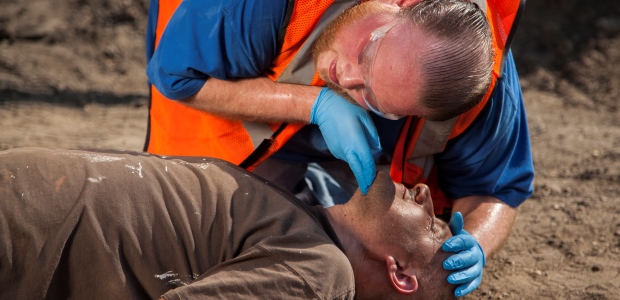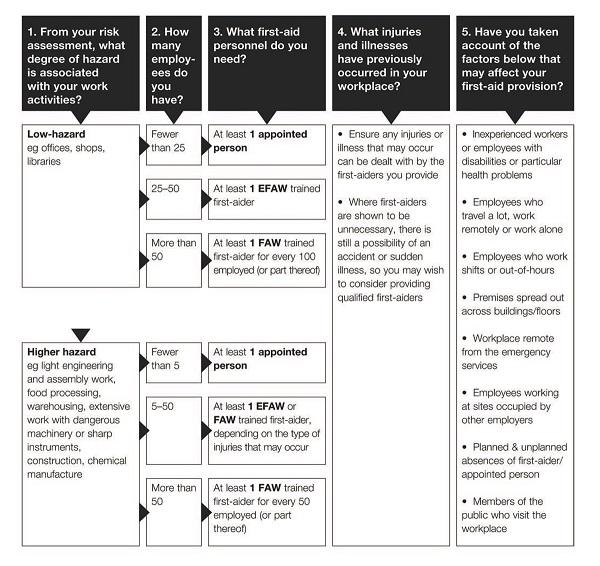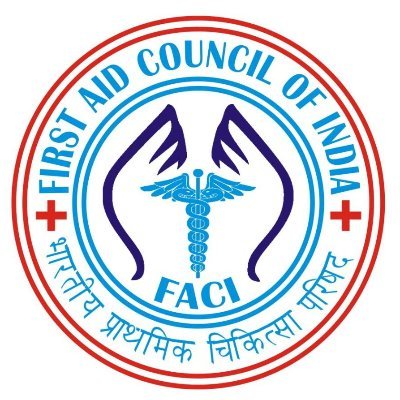FIRST AID AT WORKPLACE: Why should the HR Advocate First Aid Training Programs at Workplaces?
Why do I need first aid in my workplace?
First aid in the workplace means providing the initial treatment and life support for people suffering an injury or illness at work. In many instances, first aid can reduce the severity of the injury or illness. It can also calm the injured or ill person.
In extreme instances, quick and appropriate first aid could mean the difference between life and death.
Whether we consider a manufacturing unit or an office, employees are valuable part of them. The good health and productivity of employees are two interlinked factors that affect the profitability of a company.
According to WORLD HEALTH ORGANIZATION, work-related health problems result in an economic loss of 4-6 % of GDP for most countries.
Many work days are lost due to unintentional injuries. What is now known is that for every 100 employees, 35.21 days were lost from work due to work related injuries or illnesses every year.
Some employees work on the high-hazard environment & some on low hazard area and they face a variety of risks. Some of them are first aid emergencies that might be encountered by employees, like:
- Shock
- Bleeding
- Burns
- Poisoning
- Bites & stings
- Cardiac arrest
- Musculoskeletal injuries
- Temperature extremes
- Medical emergencies
When is First Aid required?
As the name suggests, first aid is the first response or treatment given to someone who has been injured. It is administered before they are transferred to proper medical care.
Many people in India lose their lives before reaching to hospitals and here, first aid training may act as a life saving set of skills. As we all know that the first action taken after an emergency is very crucial as it decides the future course of the injury and its complication rate. Without first aid, a victim’s condition may worsen which leads to greater medical costs and lost productivity. In serious cases, first aid may be necessary to keep the victim alive.
The objectives of first aid are to preserve life, prevent deterioration, and promote recovery.
When an employee has the knowledge of first aid, he is more conscious of safety in workplace, leading to reduced number of injuries and accidents.
Situations where first aid could potentially make a difference include suffocation due to blocked airways, which claim 2,500 lives every year, and heart attacks, which kill 29,000.
Up to 150,000 people a year might lose their lives unnecessarily because first aid is not widely available at the accident prone places.
So, to provide a safer and healthier environment, the knowledge and proper training of first aid is a must.

When we talk about need and importance of first aid at workplace;
So, when we consider:
- Saving lives
- National guidelines for safety of first aid in occupational settings
- Lost Working Days
- Protection of our valuable employees
- Employees Good health
- Providing Proper working conditions
- Productivity of the employees
- Business cost
All this combines and makes a good business sense to provide first aid training to the employees especially for those who are working at accident prone conditions.
What does the Law Say?
The Occupational Safety, Health and Working Conditions Code (OSH) is a bill, currently under consideration for enactment by the Indian Parliament. The proposed OSH Code repeals and replaces 13 labour laws relating to health, safety and working conditions. The employer is obliged to take care to protect the worker’s health and safety by providing the means of rescue, the first aid, and the cleanup; and arrangements and organization of the workplace.
ISO 45001 requires the organization to establish, implement and maintain a process to prepare for emergency situations and to respond if they occur. This response includes the provision of first aid. Where the process is combined with other emergency preparedness and response processes, such as those required by ISO 14001:2015 or ISO 22301:2012, the organization must ensure that it addresses all potential OH&S impacts and should not presume that the processes related to fire safety, or environmental emergencies, etc., are sufficient.
In United Kingdom, the employers must meet the requirements of the Workplace Health and Safety Act 1974. Under the Act, as an employer, you are required to provide:
First Aid Facilities — such as a first aid kit, a first aid room, a health centre and/or first aid equipment, as appropriate.
First Aid Services — such as workers trained to be first aiders, training and information, as appropriate.
Is First Aid different than Occupational Health and Safety provisions of law?
Occupational Health and Safety laws in India provide guidelines on the hazards of particular trades, such as, Mines Act 1952 might provide detailed guidelines on the risks and hazards related to mines workers and technical means to avoid the incidents/accidents. However, the First Aid training program is more concerned and focused on training the workers in lives saving techniques.
For example, if a worker experiences Heart Attack at work place, the OSH trained worker is supposed to call the ambulance and the victim will be given first aid only when the ambulance is arrived. Whereas, having a trained First Aid Worker may provide immediate life saving support to such an employee and may result in saving a precious life of your employee.

Therefore, this is high time when HR professionals in India should propose and advocate such laws in India to mandate having First Aid training programs for the workers.
First Aid Needs Assessments
Conducting a first aid needs assessment will identify what type of first aid training your first aiders will need, how many first aiders you need and where they should be located.
A first aid needs assessment should consider the following:
- the nature of the work and workplace hazards and risks
- the size of the organisation
- the nature of the workforce e.g. are there any employees with disabilities or particular health problems?
- the organisation’s history of accidents
- the needs of travelling, remote and lone workers
- work patterns
- the distribution of the workforce
- the remoteness of the site from emergency medical services
- employees working on shared or multi-occupied sites
- annual leave and other absences of first aiders and appointed person
- first-aid provision for non-employees
Suggested Numbers of First Aid Personnel
This table shows the suggested numbers of first aid personnel to be available at all times people are at work.

Who are the market players?
NEBOSH, United Kingdom

Though, Nebosh does not have a focused program on First Aid, but most of the OSH certificate and diploma programs of Nebosh include sections of first aid training.
Visit following page to see the list of courses: https://www.nebosh.org.uk/qualifications/#Certificates
FACI- Fisrt Aid Council of India

FACI provides a more focused program on First Aid, more details on the following link:
https://www.faci.ind.in/en/first-aid-specialist-diploma-course/

Nice thoughts, Nupur 👍👍
Though, Factory act 1948 mandates employing safety officers, those who are usually NEBOSH or OSHA certified, and their training programs have first aid included in the curriculum,
Yet this is a good idea to have personnel who are specifically trained in giving life saving first aid assistance such as CPR etc.
Let’s promote this cause.
Abhishek
Hi, Nupur,
We do have mandatory appointments of medical personnel such as company nurse or physician upon a certain number of employees in Gulf countries- UAE, Qatar, Kuwait and like wise in Saudi Arabia.
Similarly, Indian Labor Authorities should mandate appointment of healthcare workers, at least first aiders, for the industries.
It’s good that HRs of the region are purposing and making recommendations for this.
Kudos !!
We have regulations on place to deploy Occupational Health Nurses at the worksites in France as well as here in London.